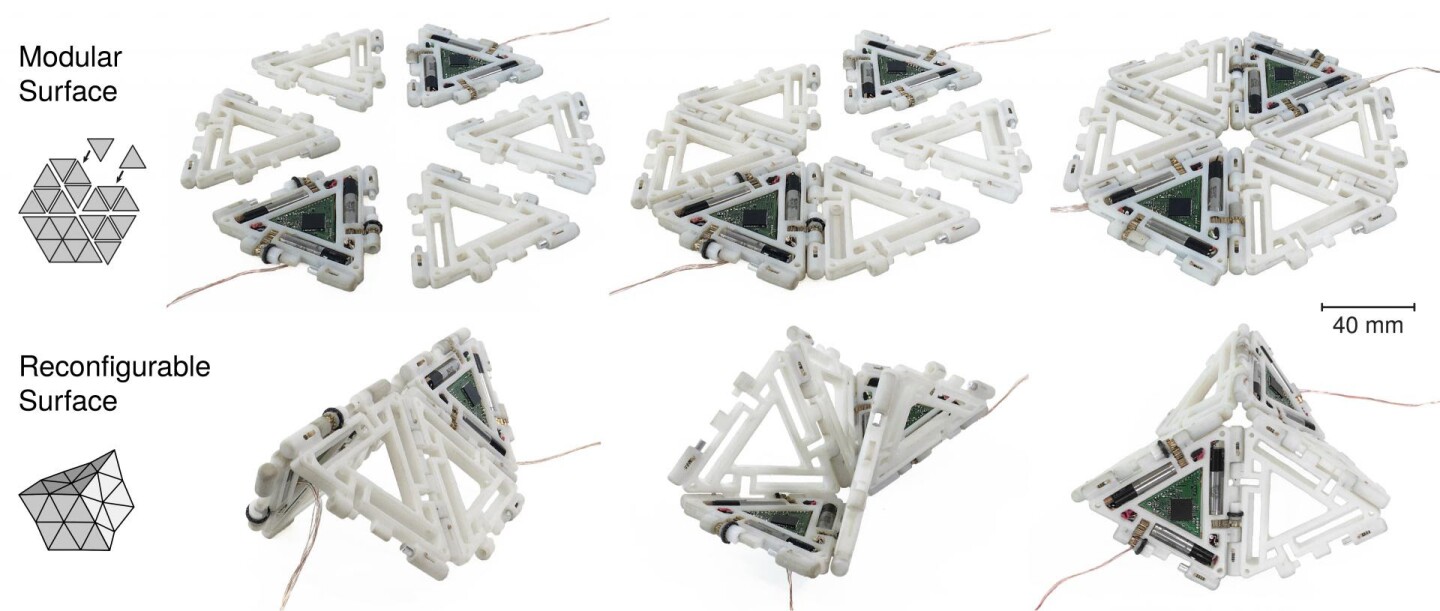Origami has plenty to offer the world of robotics, inspiring clever folding machines that could find their way into our stomaches and out to Mars. Scientists have again borrowed from this ancient Japanese art form to create small triangular bots that can be snapped together and folded into modular machines of different shapes and sizes.
Developed by researchers at Switzerland's National Centre of Competence in Research (NCCR) Robotics and École polytechnique fédérale de Lausanne, the Mori robot is at its core a small triangular structure. It weighs 26 g (0.9 oz), is 70 mm wide and 6 mm thick (2.75 and 0.25 in). Within these tiny machines are actuators, sensors and an onboard controller, while power comes from an external source.
On its own, one of these robots can shuffle across a surface using its rotating edges as wheels. But snap more Mori's together and these edges become hinges, allowing the individual panels to flap back and forth to create a modular and highly customizable three-dimensional robot.

The team tested out Mori's capabilities in a few different scenarios, having a single bot slide through a narrow gap and having several join together into a reconfigurable surface. But most impressively, the assembled robot was hooked up to an external camera to create a feedback loop, allowing it to adjust its shape on the fly in order to balance a ball on top of a flat panel.
As for where these capabilities could be put to use in the real world, the team says further down the track the reconfigurable robot could find applications in space, where it could change its shape to repair structures. It could also one day be used as a shape-shifting interface to represent geographical data, for example, or conform to injured limbs.
A research paper describing the robot was published in the journal IEEE/ASME Transactions on Mechatronics, and you can see it in action (including the neat ball trick) in the video below.
Source: Swiss National Centre of Competence in Research Robotics






